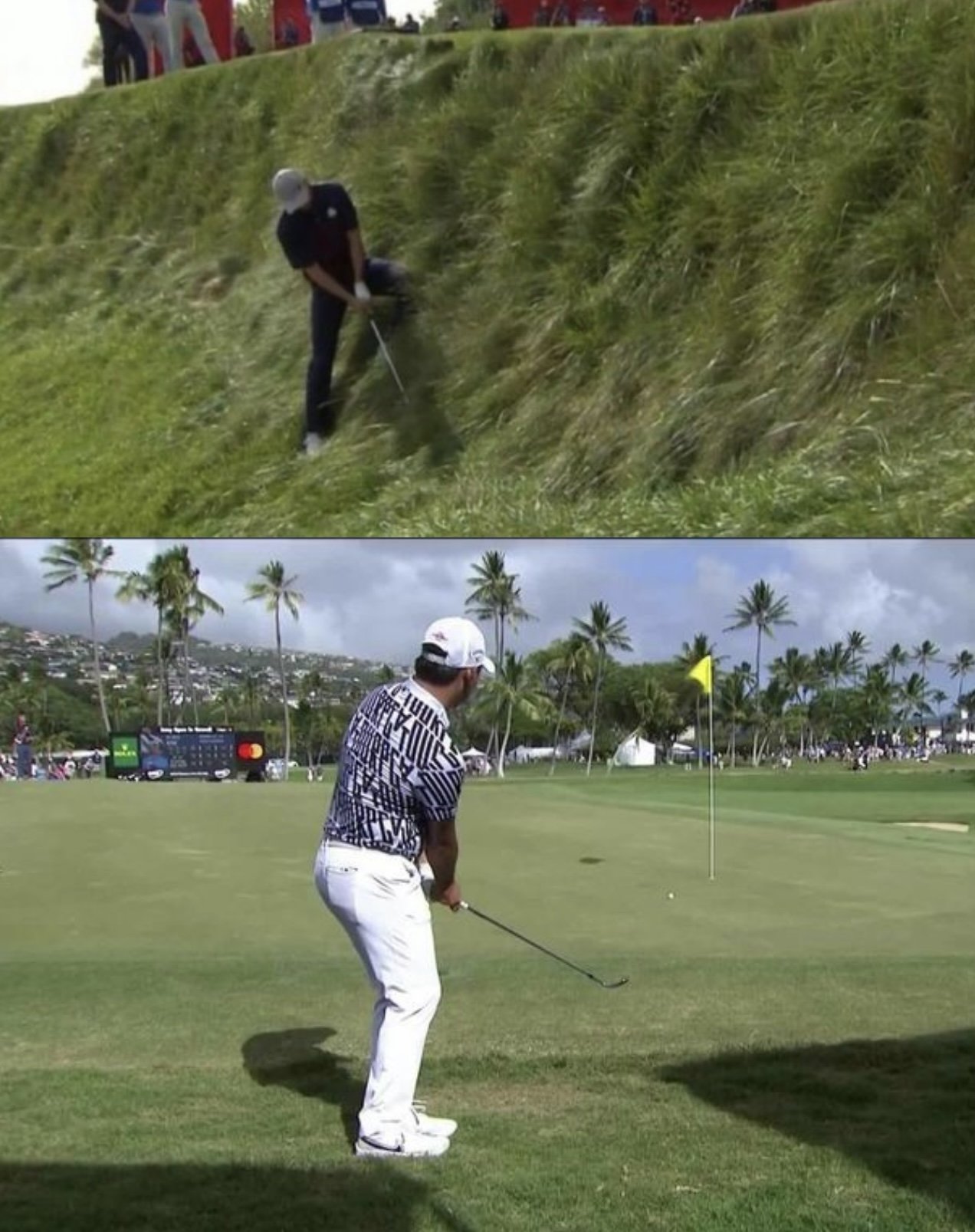The Upgame way of analysing your short game
How to correctly analyse short game and approach strategy
Shots around the green are fundamental parts of golf and so we need to be able to analyse them correctly. Strokes gained has provided us with a lot of value when analysing someone’s short game, but it is far from the perfect statistic.
The problem when only using strokes gained to analyse short game
The main issue with strokes gained around the green is that there is so much more that will influence the shot than just the distance and the lie. As players and coaches, we know that not all misses with approach shots are equal and unless we start to apply more context to our stats, we will start to come to conclusions about our game that are incorrect. Below are two examples of how different two shots around the green can be, despite being analysed equally by strokes gained.
Example 1:
Jordan Spieth - 2021 Ryder Cup, hole 17, whistling straights
Example 2: S
i Woo Kim – 2023 Sony Open in Hawaii, hole 17, Waialae
Both of the shots above are ~10 yards and deemed to be in the ‘rough’. Using strokes gained, these shots are deemed equallydifficult and the average PGA tour player is expected to hole out in 2.34 strokes. Therefore, if both players hit their shots to 10ft, each would gain/lose the same amount of strokes. I think we can all agree, however, that despite both of similar distance from the rough, these shots are not of equal difficulty. We need to apply more context.
Applying context to your short game analysis
Using upgame pro we are able to better describe and therefore analyse short game by defining the difficulty of short game shots as easy, medium or hard. We can see how much this affects the data when we analyse more than 17,000 short-game shots from 20 tour players across the PGA, DP World and Asian tours. Below we can see how much effect missing in the right or wrong spots will have on a player’s strokes gained.
Why is it so important that we have this information? Ultimately, we use data to analyse our game to identify our strengths and weaknesses. With this information, we know what we need to improve. Without applying the correct context to shots around the green, we don’t correctly analyse short game. I’m going to use an example to explain why.
Three players play a round of golf, with each player having 8 short game shots during the round.
Player A: 2 of their short game shots are easy, 4 are medium and 2 are hard.
Player B: 4 of their short game shots are easy, 2 are medium and 2 are hard.
Player C: 2 of their short game shots are easy, 2 are medium and 4 are hard.
Here is why the context is crucial. If we assume each player is an ‘average’ tour player and use the data from the table above, we start to see the effect this will have.
Player A strokes gained around the green = (2 x 0.15) + (4 x 0.04) + (2 x -0.19) = +0.08
Player B strokes gained around the green = (4 x 0.15) + (2 x 0.04) + (2 x -0.19) = +0.29
Player C strokes gained around the green = (2 x 0.15) + (2 x 0.04) + (4 x -0.19) = -0.38
Without the context, Player C would identify their short game as a weakness because they are losing strokes. On the otherhand, Player B would identify their short game as a big strength.
With the added context of shot difficulty, we can see that Players A, B and C have executed each shot difficulty equally and so their short game is actually of equal quality. What we actually see is the difference in each player’s approach play strategy. Player B is missing in the right areas more than player A and a lot more than player C.
The reality is that Player C needs to focus more on their approach play strategy and try to reduce the number of ‘hard’ misses than they do on their short game. As a guide, the average number of hard short game shots from these 20 tour players was 25%.
How to improve your approach play strategy using upgame.
Approach play strategy comes down to two things: what is your dispersion and what are the demands of the hole?
Let us use the Jordan Spieth example from above.
Hole 17 at whistling Straights. We know from where Jordan Spieth was that you do not want to miss left because this is where the ‘hard miss’ is.
Using the upgame plan round we can see our dispersion pattern on this particular shot and plan accordingly
When we look at our dispersion pattern on the shot, we can see that if we were to aim straight at the pin, a high % of shots would finish in this ‘hard’ area. This is exactly what we want to avoid.
The ideal target to ensure you have a high % of shots on the green whilst avoiding the hard miss area is 5 yards right of the flag for this shot.
Conclusion
The strokes gained around the green statistic will be heavily influenced by where you are missing your approach shots. Before you jump to conclusions about your short game based on this statistic, first analyse using upgame how often you are putting yourself in easy, medium or hard spots. If you are losing strokes around the greens but have a high % of hard shots, then you first need to focus on reducing this by altering your approach play strategy rather than focusing on your short game.





